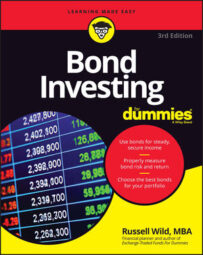When investment pros talk of volatility, they are talking about risk. When they talk about risk, they are talking about volatility. Volatility in an investment means that what is worth $1,000 today may be worth $900 . . . or $800 . . . tomorrow.
Bonds are typically way less risky than stocks (that’s why we love bonds so much), but bonds can fall in value. Some bonds are much more volatile than others, and before you invest in any bond, you should have a good idea what kind of volatility (risk) you are looking at.
Time frame matters most
The more time until the bond matures, the greater the bond’s volatility. In other words, with long-term bonds, there’s a greater chance that the principal value of the bond can rise or fall dramatically. Short-term bonds sway much less. On the other hand — and here’s a somewhat funny contradiction — the further off your need to tap into the bond’s principal, the less that volatility should matter to you.
Nothing affects the value of your bond holdings as much as prevailing interest rates. If you’re holding a bond that pays 5 percent, and prevailing interest rates are 6 percent, your bond isn’t worth nearly as much as it would be if prevailing interest rates were 5 percent (or, better yet, 4 percent).
But just how sensitive is the price of a bond to the ups and downs of interest rates? It depends, mostly on the maturity of the bond.
Suppose you are holding a fresh 30-year bond with a coupon rate of 5 percent, and suddenly prevailing interest rates move from 5 percent to 6 percent. You are now looking at potentially 30 years of holding a bond that is paying less than the prevailing interest rate.
But suppose you are holding either a very short-term bond or an old 30-year bond that matures next month. In either case, you will see your principal very soon. Does it matter much that prevailing interest rates have risen? No, not really. The price of your bond isn’t going to be much affected.
Quality counts
High quality, investment-grade bonds, issued by solid governments or corporations, tend to be less volatile than junk bonds. This has nothing to do with interest rates but, rather, with the risk of default.
When the economy is looking shaky and investor optimism fades, few people want to be holding the debt of entities that may fail. In times of recession and depression, high quality bonds may rise in value and junk bonds may fall, as people clamor for safety. Overall, the junk bonds bounce in price much more than the investment-grade bonds.
The coupon rate matters, too
Returning to the effect of interest rates on bond prices, not all bonds of like maturity have the same sensitivity to changes in prevailing rates. Aside from the maturity, you also need to consider the coupon rate. Bonds with the highest coupon rates on the market (bonds currently selling at a premium) tend to have the least volatility.
Imagine that you are considering the purchase of two $1,000 bonds: One matures in three years and is paying a 10 percent interest rate ($100 a year). The other also matures in three years and is paying a 5 percent rate of interest ($50 a year).
Obviously, the market price of the 10 percent bond will be much higher. (It will sell at a premium vis-à-vis the 5 percent bond.) It will also be less sensitive to interest rates because you are, in effect, getting your money back sooner.
With the 5 percent bond, your investment won’t pay off until the bond matures and you get your $1,000 face value (probably much more than you paid for the bond). And who knows where interest rates will be then?
With the 10 percent bond, you get your investment paid back much sooner, and you are free to reinvest that money. You have much less reinvestment risk — the risk that you will be able to reinvest your money only at pitifully low rates.
The most volatile of bonds — those most sensitive to fluxes in interest rates — are zero-coupon bonds that pay all their interest at maturity.
Foreign bonds, added risk
Many foreign bonds are denominated not in dollars, but in yen, pounds, euros, or other currencies. When a bond is denominated in another currency, you can make out like a bandit if that currency appreciates against the dollar during the time you are holding the bond.
Ah, but that gate can swing both ways: If you are holding a bond denominated in a currency that depreciates against the dollar, you may walk away from your investment with much less than you’d planned.
The coupon rate on international bonds can sometimes be very attractive — but beware. Currency exchange rates are highly unpredictable. Many international bond funds also charge way too much.

